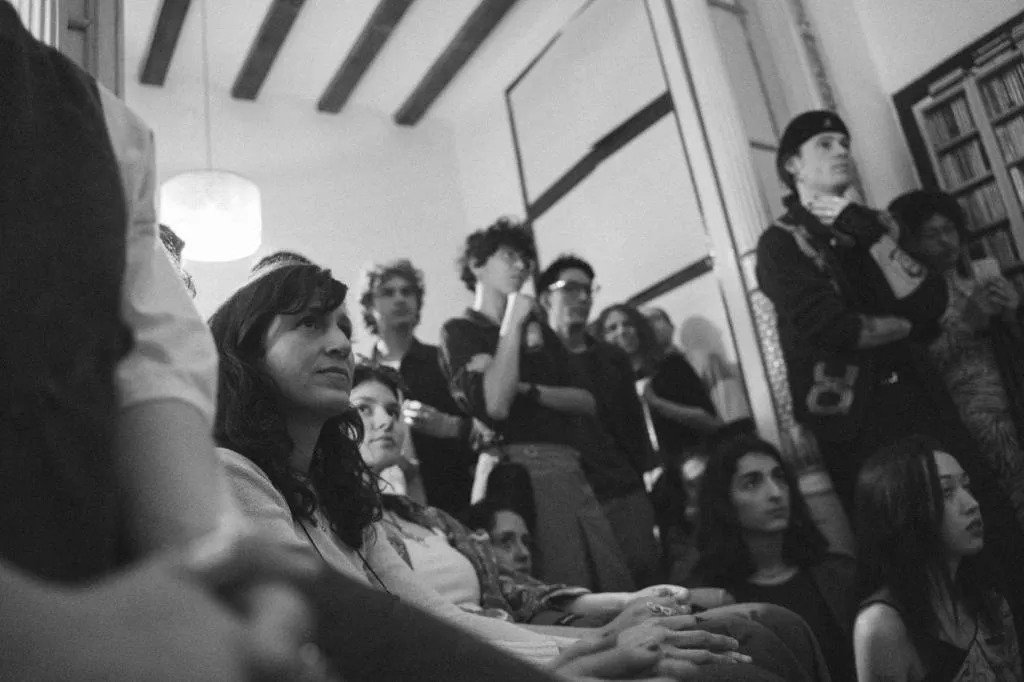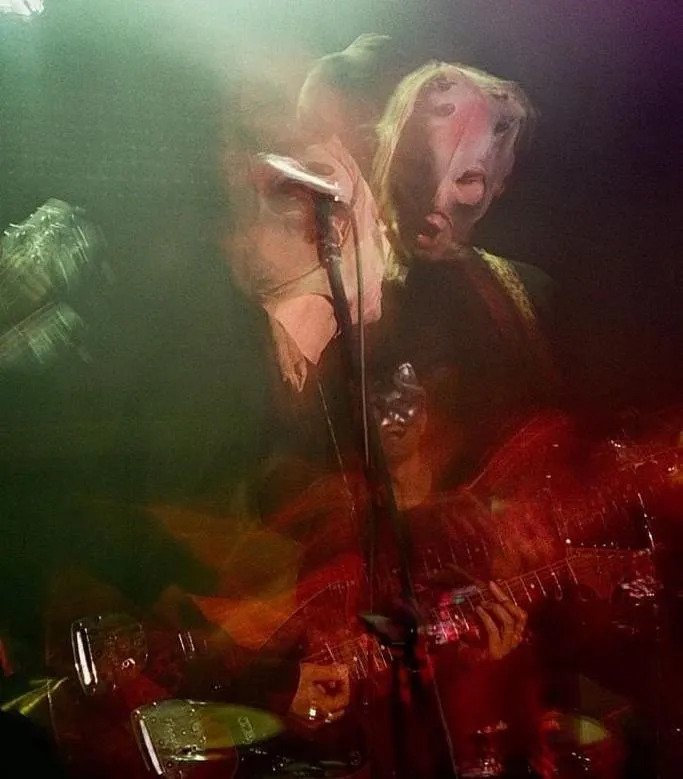An article on countercultures inspired by Josep Ramoneda’s text, “Barcelona, Open City.”
Josep Ramoneda’s “Barcelona, Open City” insights aren’t just your average observations. They’re like a pair of magical glasses, revealing culture in a whole new light. It’s not a one-size-fits-all deal; it’s a vibrant, multi-dimensional web where tradition meets knowledge and subcultures countercultures give the status quo a run for its money.
For me, this past year has been an extreme intentional immersion in the art and cultural scene of Catalunya, Spain: from reading books to attending artistic residencies, meeting curators and gallerists, consuming music, researching and field exploring Barcelona from Poblenou to Hospitalet, designing art exhibitions in collaboration with extremely talented, dedicated, artists and attending poetry open mics around the city (I even get to show off my poetic writing side during my performances 😌).
With all these experiences, I immersed myself in the city across various settings and from many different perspectives: from big institutions and highbrow art to the underground art scene and its subcultures. Understanding the complexity of social interactions is an intriguing puzzle that requires a certain degree of flexibility in one’s analysis. While studying cultural dynamics, I often found myself zooming in and out of each perspective and layer that makes up the concept of culture. This exercise granted me an understanding of the ongoing interdependence between different institutions and groups and the roles each of them plays in the cultural scene and our individual and collective daily lives. Each element doesn’t exist in isolation but rather in an eternal symbiosis with the others. Still, each has its unique characteristics and needs, making this topic even more fascinating, which triggered my need to write this article. Shall we dive in?
Josep Ramoneda’s Perspective
According to Josep Ramoneda’s text “Barcelona, Open City,” culture can be separated into two different dimensions: the first one is the broader sense of culture, involving tradition, language, and social rules, consolidating expected behaviors and trends. To him, this layer is permeable to everything that comes from outside and within. As for the other, the concept of culture relies on the sense of knowledge and symbol production. Here, there is the creation of culture through philosophy, sciences, and art which, eventually, will mold and reshape the broader culture and reflect on a city’s outward projection.
A Deeper Dive Into Culture
Nevertheless, differently than Josep’s arguments, I believe that there is still an extra dimension to the broad concept of culture and the restricted one. There is a somewhat conflicting and paradoxical layer coexisting with the other two: the countercultures layer.
In Daniel Miller’s book “Stuff,” he argues that “Things make people as much as people make things” — and that goes from communication to objects themselves. To him, individuals learn to become members of society, not through formal education, but because they are inculcated into the general habits and dispositions of that society through the way they interact in their everyday practices, which are already pre-structured in the objects they find around them.
That said, while the first dimension is conforming to the rules of society, the counterculture dimension deals with taboos and their deconstruction, supporting discussions with controversial topics, generally discriminated against by the broader culture, from customs, religions, sexual options, and lifestyle, among others. As it is known, taboos are created by society through the imposed moral standards and social conventions. Therefore, it can be different from one culture to another, being a somewhat relative concept. Thus, while in Judaism eating pork is prohibited, in other cultures this is extremely normal. In other words, a topic that is taboo for some may not be for others, however, it deals with issues that are avoided by the population in general. By deconstructing these social rules through philosophy and science, we open space for new possibilities and the creation of new symbols through art that ultimately influence macro culture.

The Power & Paradox of Countercultures & Subcultures
For the French sociologist Michel Maffesoli, the phenomenon of urban tribes is constituted in the various networks, groups of affinities and interests, and neighborhood ties that structure our megalopolises. These groups tend to foster a feeling of exclusivity and “strict conformism” among their participants and normally avoid interaction with everything and everyone that goes against it. Some examples of subcultures and countercultures are punks, clubbers, ballrooms, and even dumpster divers. Whatever it is and whoever they are, what is at stake is the power against the power and the ideologies that are in-between.
I stumbled upon one of these micro-communities in Barcelona due to my passion for poetry. In the spring of 2022, I attended a poetry open mic session hosted by the Znak Community. At that time, the event took place in a beautiful private apartment near the renowned La Pedrera — Casa Milà, a UNESCO World Heritage Site and a masterpiece designed by Gaudí.
What initially captivated me about this community went far beyond the opportunity to share my poetry in an inclusive space. It was the prospect of connecting with a wonderfully diverse array of individuals that truly drew me in. This eclectic mix included people from various nationalities and ethnicities, spanning cis and queer individuals, neurodivergent and neurotypical individuals, writers, performers, scholars, painters, musicians, photographers, filmmakers, and even opera singers. They all converged in an intimate setting, creating a dynamic and enriching atmosphere.
What made this experience even more exhilarating was the knowledge that you never quite knew what to expect, very different from Ramoneda’s broader sense of culture, which is filled with rules and expectations. The fusion of diverse cultures, identities, and backgrounds added an element of unpredictability, making interactions both exciting and full of potential. In this unique space, you had the freedom to be your authentic self or even explore new dimensions of your personality, as there was a place for everyone and the thrilling possibility of exploring and interweaving with others to create entirely new movements.
However, a certain contradiction soon became apparent. Over time, it became evident that certain behaviors needed addressing, and some norms of conduct were important to maintain, even in a group dedicated to embracing diversity and challenging the status quo. The subculture remained a realm with its own symbols and values, a realm with distinct cultural characteristics set apart from the dominant way of life without entirely rejecting it. Consequently, individuals within this specific group found themselves conforming to their own set of rules. While the subculture provided refuge from the rigid norms imposed by broader cultural strata, it also had its own clear rules that guided participants within its boundaries, preventing them from drifting too far into the abstract world of undefined behaviors.
The Philosophy of Freedom
According to Bauman, men are not ready for freedom. These types of answers tend to be accompanied by either pity for the men duped out of their freedom or anger at the masses unwilling to take up their liberty. Such answers are also accompanied by attempts to explain why men do not perceive the need to be free, with the blame being laid variously on a modern culture that replaces ‘having’ with ‘being’; the embourgeoisement of the underdog, or a culture industry which makes us thirst for entertainment rather than spiritual fulfillment.
Bauman now draws on the legacy of Durkheim to argue that we are right to be skeptical about the benefits of libertarian notions of freedom. He seems to be sympathetic to the Durkheimian idea that a degree of social coercion is actually an emancipatory force. To quote Durkheim:
‘The individual submits to society and this submission is the condition of his release. For man freedom consists of deliverance from blind, unthinking physical forces; he achieves this by opposing against them the great and intelligent force of society, under whose protection he shelters. By putting himself under the wing of society, he makes himself also, to a certain extent, dependent upon it, But this is a liberating dependence, there is no contradiction in this.’ (Durkheim, 1974, pp. 72).
In other words, to Durkheim, there is no way to achieve freedom other than to submit to the norms of society — the individual needs society to be free. Total freedom from society means a perpetual agony of indecision and uncertainty about the will of those around you, whereas patterns and routines condensed by social pressures give us road markings, inform us how to act, and give us a sense of certainty in this life.
That’s exactly what Josep Ramoneda’s restricted concept of culture goes to: the philosophy, the questions, and the uncertainties. Which gives the members of this group the possibility to create new truths. However, maybe suffering from the pressure of the other two layers and from the anxiety that the lack of certainty can cause in one’s self.

Cultural Management Implications
In my opinion, all three dimensions coexist and generate mutual exchanges constantly. There are none of them without the other. One can see the strict layer as the collective inner spirit: restless, with questions and paradoxes. This dimension is fueled by the other two, being curious and bold enough to challenge their concepts and materialize new paradigms. While experimenting with different realities and ideas, it slowly manifests itself in the bowels of a city. Generating bubbly discussions in the other layers and possibly creating subcultures and countercultures that end up embracing some of these symbols.
As for the broader perspective, it serves individuals who are not ready to deal with the pressure of challenging norms, providing them a step-by-step on how to behave and communicate and fulfilling their needs for acceptance and security. This dimension is also susceptible to change and to be influenced by the other ones. However, since it deals with the masses and extremely rooted social ties, this is a large and resistant force.
In conclusion, since cultural managers like me work as a mediator between governmental and/or private cultural institutions and artists from different areas, it is important to comprehend each dimension of culture to better articulate with each one of these stakeholders in order to seek cohesion between them. By keeping this in mind, the cultural manager may be able to better achieve their goals when visualizing and interpreting talents, knowing how to establish a dialogue with artists and link them to cultural projects as well as influencing cultural institutions to embrace these movements and individuals. And, as a result, improve the art world and our communities through the dissemination of art.
By XAV XAVIER
Originally published on Medium.com
Main image: Catalonian Punk band “Daft Kant” @Sala Meteoro, Barcelona | Analog Photography by Emilia Marciniec
About the author
My world revolves around communications, artists, and culture, as I collaborate with numerous creative minds, galleries, venues, production companies, and collectives both in Barcelona and globally. My Master’s degree in Arts & Cultural Management from the Universidad Internacional de Catalunya honed my expertise in navigating the intersection of arts, culture and business.
With a User Experience Design background, I apply design thinking and a user-centered approach to my projects, resulting in unique endeavors such as SAMAMBA: an experience design studio that seeks to enhance human connection and critical thinking through arts, culture, and play.
Furthermore, I mentor and devote myself to artists to boost their careers and assist them with branding and business affairs such as creating personalized communication materials, designing websites, writing content, refining their artistic branding, and developing effective strategies to foster network expansion through strategic partnerships.
Last but never the least, I write articles on arts, design, culture, and society, as well as poems, which I perform in open mics and spoken words events as my melodramatic alter ego PAGOO.

Bibliography
- Maffesoli, M. (1996) “The Time of the Tribes”, London: SAGE.
- Maffesoli, M. ‘From society to tribal communities’, trans. Rob Atkins, Sociological Review
- Ramoneda, J. (2011) “Barcelona Open City”.
- Miller, D. (2010) “Stuff”, UK: Polity Press.
- Bauman, Z. (2000) “Liquid Modernity”. UK: Polity Press.
- Durkheim, E. (1974) “Sociology & Philosophy”, New York: The free press.



Thank you for reading and sharing stories of art & creativity on FrikiFish! This platform is an ad-free, one-woman labor of love, providing free content and services to artists, art-lovers and creative projects in Barcelona. If these pages enrich your life in any way, please consider supporting with a donation or a cup of coffee. Thank you!